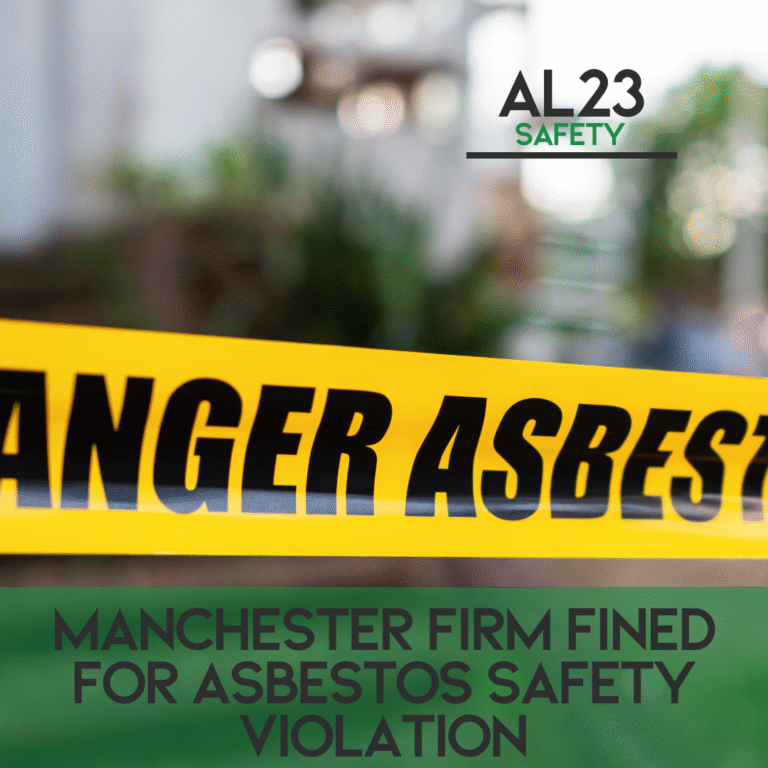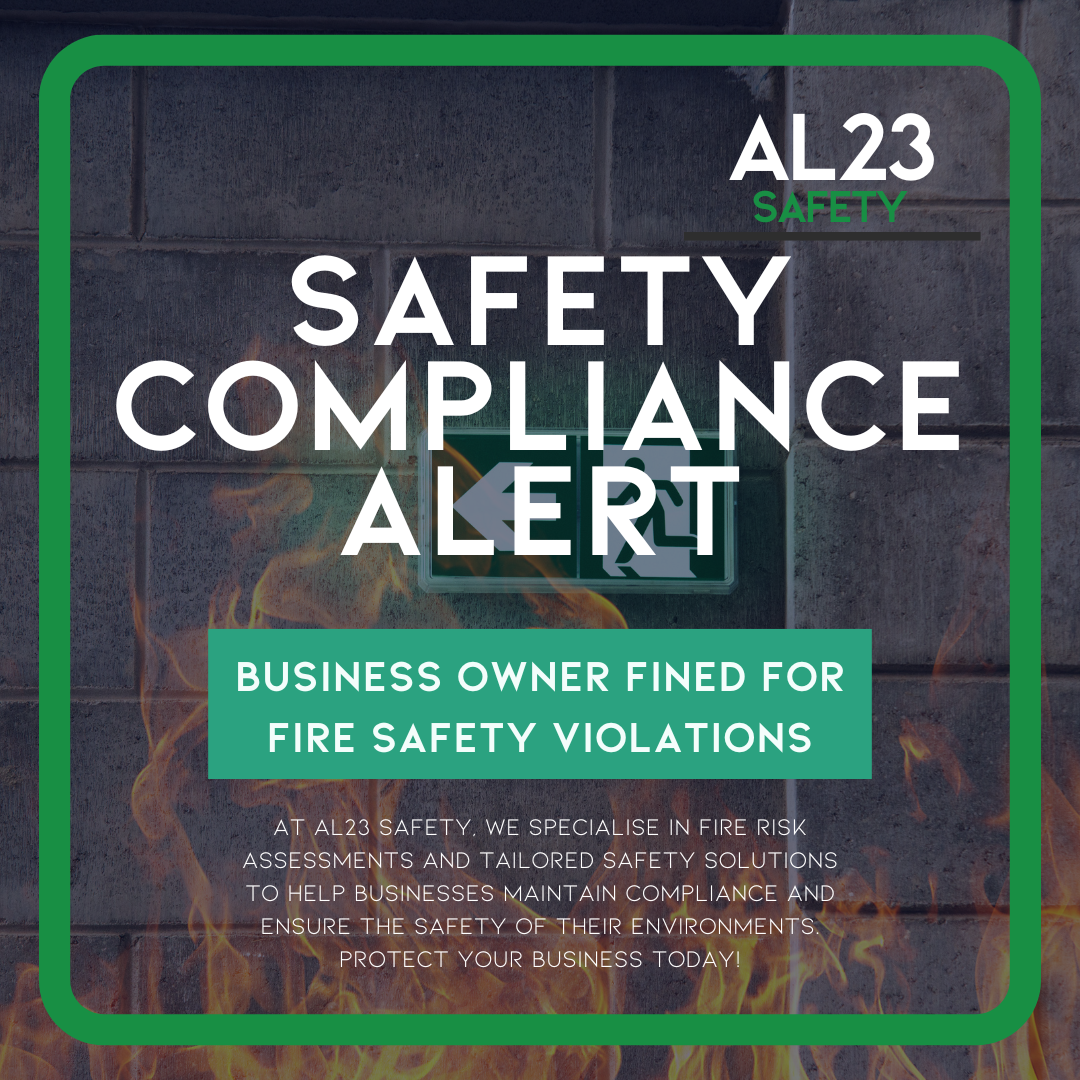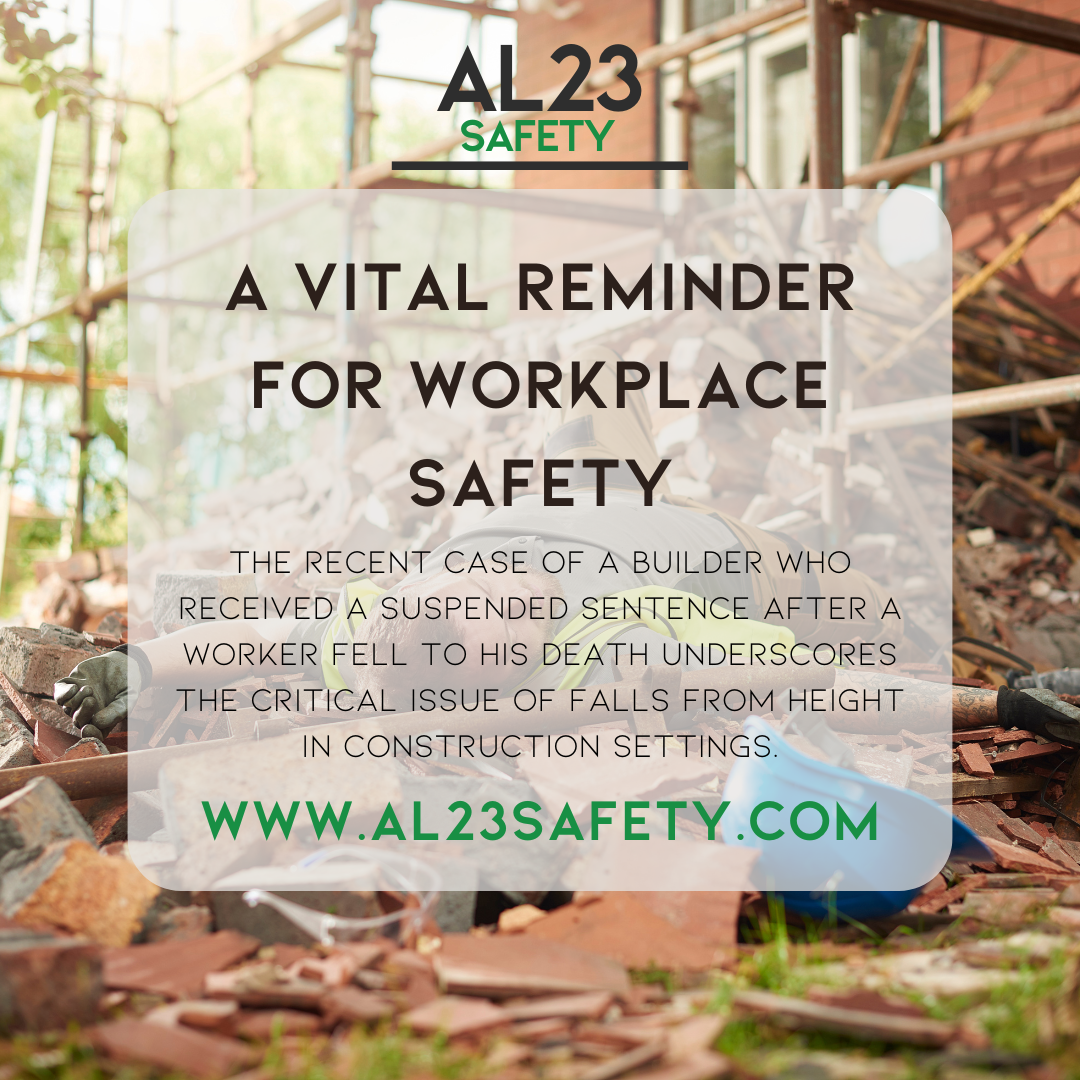Asbestos compliance is non-negotiable in the UK construction and maintenance sectors, where a single oversight can lead to irreversible health risks and severe legal consequences. The recent case involving A1 Property Maintenance Management Limited at the former Unicorn Public House in Eccles, Greater Manchester, underscores this harsh reality. During renovation work, workers were exposed to asbestos risks due to inadequate surveys, resulting in a £5,360 fine and £5,117 in costs at Manchester Magistrates’ Court. As leading health and safety consultants at AL23 Safety, we see such incidents as preventable tragedies.
The Control of Asbestos Regulations 2012 demands rigorous protocols to identify and manage asbestos-containing materials (ACMs), yet non-compliance persists, endangering lives and livelihoods. In this comprehensive guide, we dissect the Manchester case, explore key asbestos regulations UK, and share five vital lessons to fortify your asbestos compliance framework. By prioritising workplace asbestos safety, businesses can safeguard their teams, comply with the law, and avoid the devastating fallout of asbestos exposure prevention failures.
The Manchester Unicorn Pub Case: A Costly Breach of Asbestos Compliance
The incident at the Unicorn Public House on Liverpool Road highlights the perils of neglecting asbestos survey requirements. A1 Property Maintenance Management Limited served as the principal contractor for the demolition and refurbishment project. In May 2022, a routine Health and Safety Executive (HSE) inspection uncovered that 12 square metres of asbestos insulating board (AIB) in a dumb waiter lift shaft had been illegally removed by unknown parties prior to the visit. Debris suspected to contain asbestos was scattered around the site, prompting an immediate prohibition notice that halted all work until a proper survey could be conducted.
Although a licensed contractor later wrapped and removed the debris, the company failed to perform a full asbestos survey to verify that no ACMs remained before resuming construction. This breach exposed workers to potential inhalation of asbestos fibres, which can cause fatal diseases like mesothelioma, lung cancer, and asbestosis, illnesses that may not manifest for decades. The firm pleaded guilty to violating Regulation 4(6) of the Control of Asbestos Regulations 2012, which mandates duty holders to assess and manage asbestos risks effectively.
HSE’s investigation revealed a pattern of inadequate planning: site workers had previously entered the unsecured building after noticing a broken door, discovering suspicious debris without proper protective measures. The total penalty exceeded £10,000, but the human cost could be far greater. An HSE spokesperson emphasised: “This was a serious incident and put those working in the building at risk of being exposed to the harmful effects of asbestos.” This case exemplifies how lapses in asbestos compliance not only invite fines but erode trust and operational continuity.
Navigating Asbestos Regulations UK: Your Legal Roadmap to Compliance
At the core of asbestos compliance lie the Control of Asbestos Regulations 2012 (CAR 2012), which place clear duties on employers, building owners, and contractors as “duty holders.” These regulations require a thorough asbestos management plan, including:
- Risk Assessments: Identify whether ACMs are present in non-domestic premises built or refurbished before 2000.
- Surveys: Management surveys for routine maintenance or refurbishment/demolition surveys for invasive works, conducted by UKAS-accredited specialists.
- Safe Removal and Disposal: Only licensed contractors can handle high-risk removals, with strict controls on air monitoring and waste handling.
- Training and Information: All workers must receive asbestos awareness training, and sites must display warnings.
The Health and Safety at Work etc. Act 1974 reinforces these by requiring employers to ensure, so far as is reasonably practicable, the health and safety of employees. Non-compliance can lead to unlimited fines under the Health and Safety (Offences) Act 2008, as seen in Manchester. HSE’s “Asbestos: Your Duty” campaign further urges proactive measures, providing free resources on identification and response. For construction firms, integrating these into project bids and contracts is essential to uphold asbestos exposure prevention standards.
5 Vital Lessons from the Manchester Case on Asbestos Compliance
The Unicorn Pub fiasco offers stark, actionable insights. Here are five lessons to enhance your asbestos regulations UK adherence and bolster workplace asbestos safety:
1. Mandate Comprehensive Asbestos Surveys Before Any Works Begin
A1’s failure to conduct a full survey post-debris removal allowed risks to linger. Lesson: Always commission a type 3 (refurbishment/demolition) survey for high-risk projects. Schedule re-assessments after any site changes, like break-ins, and document findings in a central asbestos register accessible to all subcontractors. This proactive step ensures asbestos compliance from day one.
2. Train Your Team on Asbestos Awareness and Emergency Protocols
Workers entered the unsecured site without training, exacerbating exposure dangers. Lesson: Deliver annual HSE-approved training covering fibre recognition, PPE usage (e.g., RPE), and stop-work procedures. For trades like demolition and maintenance, certification via bodies like UKATA is crucial. Regular drills simulate discoveries, embedding a “if in doubt, stop” culture.
3. Secure Sites and Implement Strict Access Controls
The broken door incident highlights vulnerability to unauthorised disturbances. Lesson: Use CCTV, fencing, and 24/7 patrols for renovation sites. Develop a permit-to-work system requiring asbestos clearance certificates before entry. This fortifies asbestos survey requirements and prevents illegal removals that undermine compliance.
4. Engage Licensed Specialists for Removal and Verification
Relying on internal checks post-removal proved disastrous. Lesson: Partner exclusively with HSE-licensed firms for ACM handling, insisting on air quality tests and analyst reports. Post-removal, independent verification ensures no residual fibres. Budget for this in tenders, it’s cheaper than fines and health claims.
5. Foster a Culture of Continuous Monitoring and Reporting
The prohibition notice exposed systemic gaps in oversight. Lesson: Appoint an asbestos coordinator to audit compliance quarterly. Encourage anonymous reporting via apps or hotlines, and integrate findings into RAMS (Risk Assessments and Method Statements). Review incidents like Manchester’s in team meetings to drive improvement.
The Broader Impact: Health, Financial, and Reputational Risks of Non-Compliance
Asbestos exposure prevention isn’t just regulatory, it’s a moral imperative. Over 5,000 UK deaths occur annually from asbestos-related diseases, with construction workers comprising 70% of cases. Fines aside, victims can claim compensation via the Diffuse Mesothelioma Scheme, burdening businesses further. Reputational damage, as with A1, deters clients and talent. Conversely, robust asbestos compliance enhances bidding success, reduces insurance premiums, and builds stakeholder trust.
For SMEs, tools like HSE’s free e-learning and asbestos management templates simplify adherence. Larger firms benefit from software tracking surveys and training expiry dates.
Empower Your Operations with AL23 Safety’s Asbestos Expertise
The Manchester case is a clarion call: asbestos compliance saves lives, averts fines, and sustains businesses. At AL23 Safety, we specialise in tailored asbestos management plans, from surveys to training, ensuring seamless integration with your operations. Our accredited consultants deliver on-site audits, compliance roadmaps, and HSE liaison support to meet asbestos regulations UK head-on.
Don’t let a single oversight derail your projects. Contact AL23 Safety today for a no-obligation asbestos compliance assessment. Visit our services page to protect your workforce, secure your sites, and thrive safely. Together, we can eliminate asbestos risks and build a safer tomorrow.



